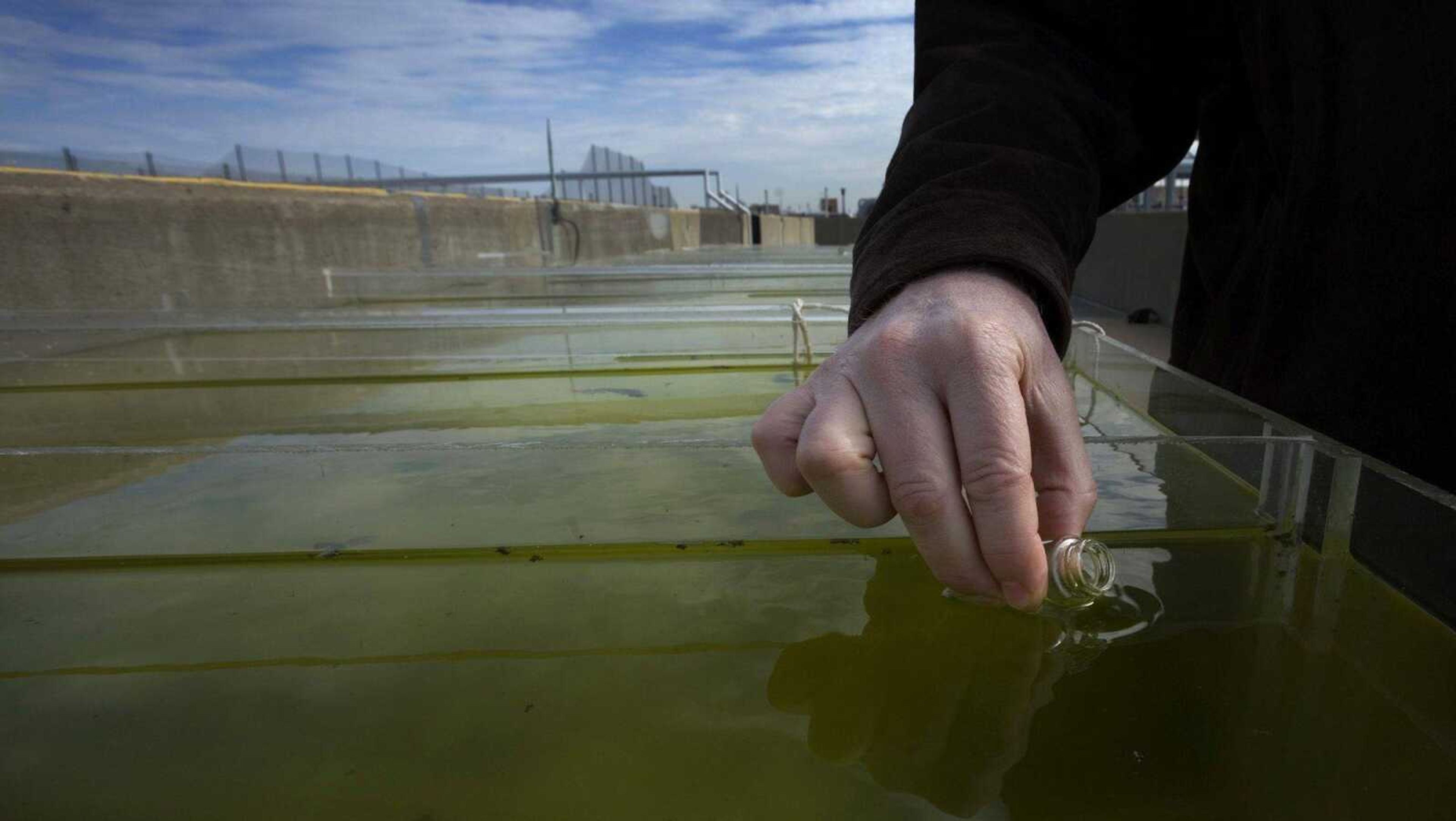Experiment in algae-based biodiesel fuel flourishing
NORFOLK, Va. -- The scientists from Old Dominion University stood on the roof of the local sewage plant and smiled. "Look at the color," said Margaret Mulholland, pointing to emerald-green slime growing in plastic tanks filled with treated sewage. "Just wait until this summer. It'll be a darker green, and in clumps."...
NORFOLK, Va. -- The scientists from Old Dominion University stood on the roof of the local sewage plant and smiled.
"Look at the color," said Margaret Mulholland, pointing to emerald-green slime growing in plastic tanks filled with treated sewage. "Just wait until this summer. It'll be a darker green, and in clumps."
The tanks are part of a pilot project for turning algae into biodiesel fuel.
Gov. Timothy M. Kaine, who says he keeps a small bottle of algae-based fuel on his desk, cites the experiment whenever he talks about alternative energy in Virginia. The Pentagon has expressed interest, and potential investors have been calling.
Researchers at other universities are conducting similar experiments with algae and biofuels. But ODU is on a slightly different path, using municipal sewage.
Virginia and its neighboring states are under pressure to reduce nutrient pollution now choking the Chesapeake Bay.
Much of the excessive nitrogen and phosphorus comes from sources that include factories, slaughterhouses and sewage plants. Conceivably, nutrient-rich wastewater from those sources could be piped to and purged at algae-growing stations, producing biofuels while reducing the amount of nitrogen and phosphorus entering the bay.
That also could reduce greenhouse gases because algae eat carbon dioxide. The ODU scientists think that if carbon emissions spewed by power plants could instead be captured and fed to their algae, the project could help fight global warming.
The pilot project could generate up to 200 gallons of biodiesel a day, worth $600,000 a year.
"Granted, that's not a lot," said Patrick Hatcher, the project leader and an ODU professor of chemistry and biochemistry. "But if you consider that this could be done at sewage plants across the country, then you're talking about a big, big thing."
The algae project received about $500,000 last year from the state -- the most money dedicated to a state-aided research of alternative energies.
Kaine has proposed increasing state funds for this and other green research to $2.3 million over the next two years. Hatcher hopes to push that total to $4.8 million.
Hatcher said ODU also is joining with other universities to take advantage of the Defense Department's interest in developing algae-based, alternative jet fuels.
For now, the experiment awaits warmer weather, when algae can grow faster and thicker.
A graduate student checks the tanks almost daily, sampling the sewage and measuring algae growth. Harvesting of mature slime is expected to start soon.
After about three days in the growing tanks, the algae will be scooped from the last container with a fine-mesh bag. They will be air-dried until they resemble a small cake, then blasted into a high-temperature converter, which captures the natural oils within algae and creates the biodiesel.
"We know we can do it; we're making biodiesel now," Hatcher said. "The real question is how far this technology can go."
Connect with the Southeast Missourian Newsroom:
For corrections to this story or other insights for the editor, click here. To submit a letter to the editor, click here. To learn about the Southeast Missourian’s AI Policy, click here.









